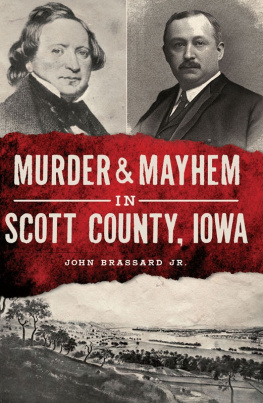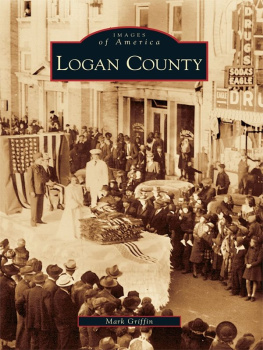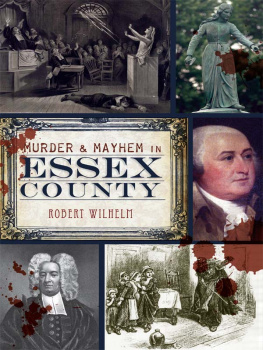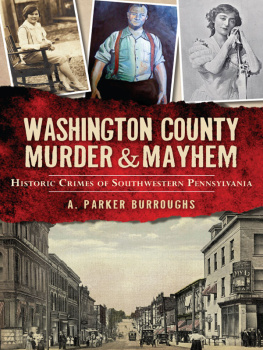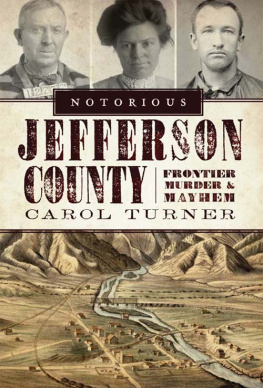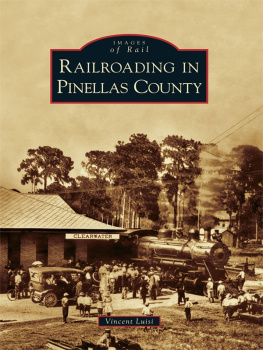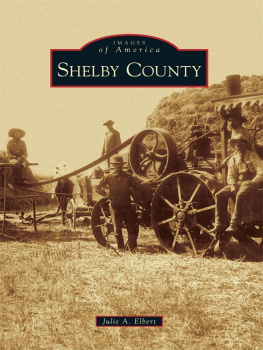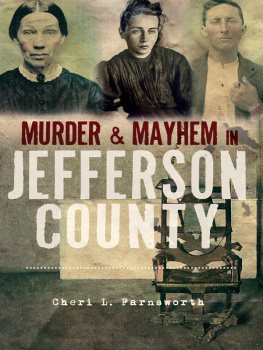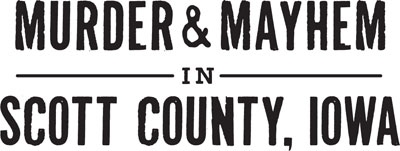

Published by The History Press
Charleston, SC
www.historypress.net
Copyright 2018 by John Brassard Jr.
All rights reserved
First published 2018
e-book edition 2018
ISBN 978.1.43966.402.5
Library of Congress Control Number: 2017958375
print edition ISBN 978.1.62585.976.1
Notice: The information in this book is true and complete to the best of our knowledge. It is offered without guarantee on the part of the author or The History Press. The author and The History Press disclaim all liability in connection with the use of this book.
All rights reserved. No part of this book may be reproduced or transmitted in any form whatsoever without prior written permission from the publisher except in the case of brief quotations embodied in critical articles and reviews.
I dedicate this book to my grandfather Robert Warren Sr., who helped to teach me about history and how to appreciate a good story.
CONTENTS
ACKNOWLEDGEMENTS
This book would not have been possible without the unyielding support of my family. I would like to thank my wife, Elaine, for listening to me whine, and my mother, Tammy, for telling me to stop whining. Thanks to my father, John, for helping me with the pictures, and special thanks to my children for just being a never-ending source of entertainment.
I would like to recognize all those who have supported my writing in a professional format by publishing my work. I thank the publisher of the DeWitt Observer, Larry Lough, and Bill Tubbs, publisher of the North Scott Press, as well as Mike Swanger, publisher of the Iowa History Journal.
I also recognize the support and encouragement of the local historical societies that I have had the pleasure to work with, such as the Scott County Historical Preservation Society, the Scott County Historical Society, the Central Community Historical Society and the Friends of Walnut Grove Pioneer Village. I extend special thanks to Ann Soenksen, Lois Wessels, Bob and Ramona Lee, Fred and Margaret Fedderson, Tom and Jackie Knapper, and Shirley Perry.
I also give special thanks to Richardson-Sloane Special Collections at Davenport Public Library for all of its assistance, especially with photographs.
INTRODUCTION
It was July 4, 1845. Colonel George Davenport sat in his home on Rock Island, listening to the sounds of the night. Davenport had lived on Rock Island for over forty years, and the sounds were comfortable for him, like a pair of well-worn shoes.
Davenports family was celebrating the Fourth of July holiday in nearby Stephenson with the rest of the city. He was feeling under the weather and did not feel like attending the festivities. Davenport did not want his family to be disappointed, however, so he insisted that they attend without him.
He leaned back in his chair and closed his eyes. Over the usual sounds of night birds and insects, Davenport could also hear the faint sounds of the parties going on in Stephenson and Davenport.
The old man laughed. He enjoyed the thought of having an entire city named after him. It had been a frontier town with big dreams, but he was sure that one day it would rank among the finest cities of the region. After all, it had his name attached to it, so it had to be great.
It had been his friend Antoine LeClaires idea to name the town after him. He had met Antoine a few years after he had come to the area. Davenport had been a sutler at the time, a private citizen who contracted with the United States government to provide various types of supplies to the newly erected Fort Armstrong. The fort had also been built on Rock Island, so Davenport built his house a short distance away. His original home had been a double log cabin, with half of it being for living space and the other half used as a store, from which he would trade with the local Indian tribes, the Sauk and Meskwakie.
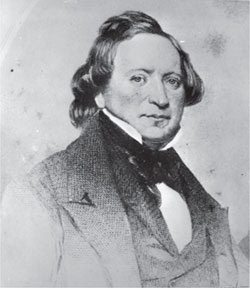
Colonel George Davenport, regional pioneer and namesake of the city of Davenport, Iowa. Courtesy of Davenport Public Library.
LeClaire was half French-Canadian and half Potawatomi. He had been hired as an interpreter by the fort commander in 1816 and had soon met George Davenport. They quickly became friends.
By 1818, Davenport had quit his job as a sutler in order to concentrate more on Indian trade. The natives liked him, and he soon had many different trading posts scattered across several miles. He had watched as more and more white settlers moved into the region. As they did, Davenport began to trade in furs, partnering up with a man named Russell Farnham. They soon joined the American Fur Company, further tapping into the then-thriving fur business of the early 1800s.
Davenport had become a wealthy man by this time and bought up the vast majority of local native lands that came up for sale in Illinois.
In 1832, tensions between white settlers and the Sauk came to a head when Black Hawk, one of the war leaders, took several hundred followers and traveled north along the Rock River. George Davenport quickly sent word to American forces in St. Louis that Black Hawk was aiming to start a war against the European settlers who had moved into the region. The governor of Illinois immediately sent military units to deal with Black Hawk and his followers and issued a call for volunteers to join the effort. He also personally bestowed the military rank of colonel on George Davenport. This short-lived conflict became known as the Black Hawk War.
After it ended, a treaty was signed on the western bank of the Mississippi among the Sauk, the Meskwakie and the United States government that ceded all native lands in Illinois and nearly six million acres of land on the western side of the river to the American government. Antoine LeClaire, who served as an interpreter at the signing, and his wife, Marguerite, were awarded large amounts of land as part of the treaty.
Beginning the following year, what had become known as the Black Hawk Purchase was opened for settlement. Several towns sprang up along both sides of the Mississippi, including Davenport and Stephenson.
Colonel Davenport and LeClaire invested a lot of time, effort and funds in the development of Davenport, which began to prosper very quickly. Hotels were opened, and businesses soon followed. Houses were built along the dirt streets, and more and more people began to move into the area.
Soon, the first glimmers of culture began to appear. Newspapers were founded and published, and churches of various denominations were erected. Schools were built, and the rough log cabin buildings of the frontier town were gradually replaced with more sophisticated wood frame ones, including the Colonels own home.
All of these advancements greatly pleased Colonel George Davenport as he sat, letting the July heat warm his bones and so many memories warm his heart and soul. Wincing, he struggled out of his chair. He had sat for too long, and his body had grown stiff. The Colonel stretched and then began to move out of the room. It would do his old mans body good to walk for a bit, he thought.
Davenport opened the door to his kitchen, his eyes widening at what he saw. Although they were mere shadows in the darkened room, Davenport could see that there were strangers in his house. Before he could react, he heard a loud crack. Instantly, a pain like white-hot fire blazed in his leg. With a cry, he grabbed his leg, lost his balance and fell. Davenport let out a groan as he slammed into the floor. Quickly, the strangers were upon him. They roughly grabbed him and bound his hands and feet with lengths of rope.
Next page
